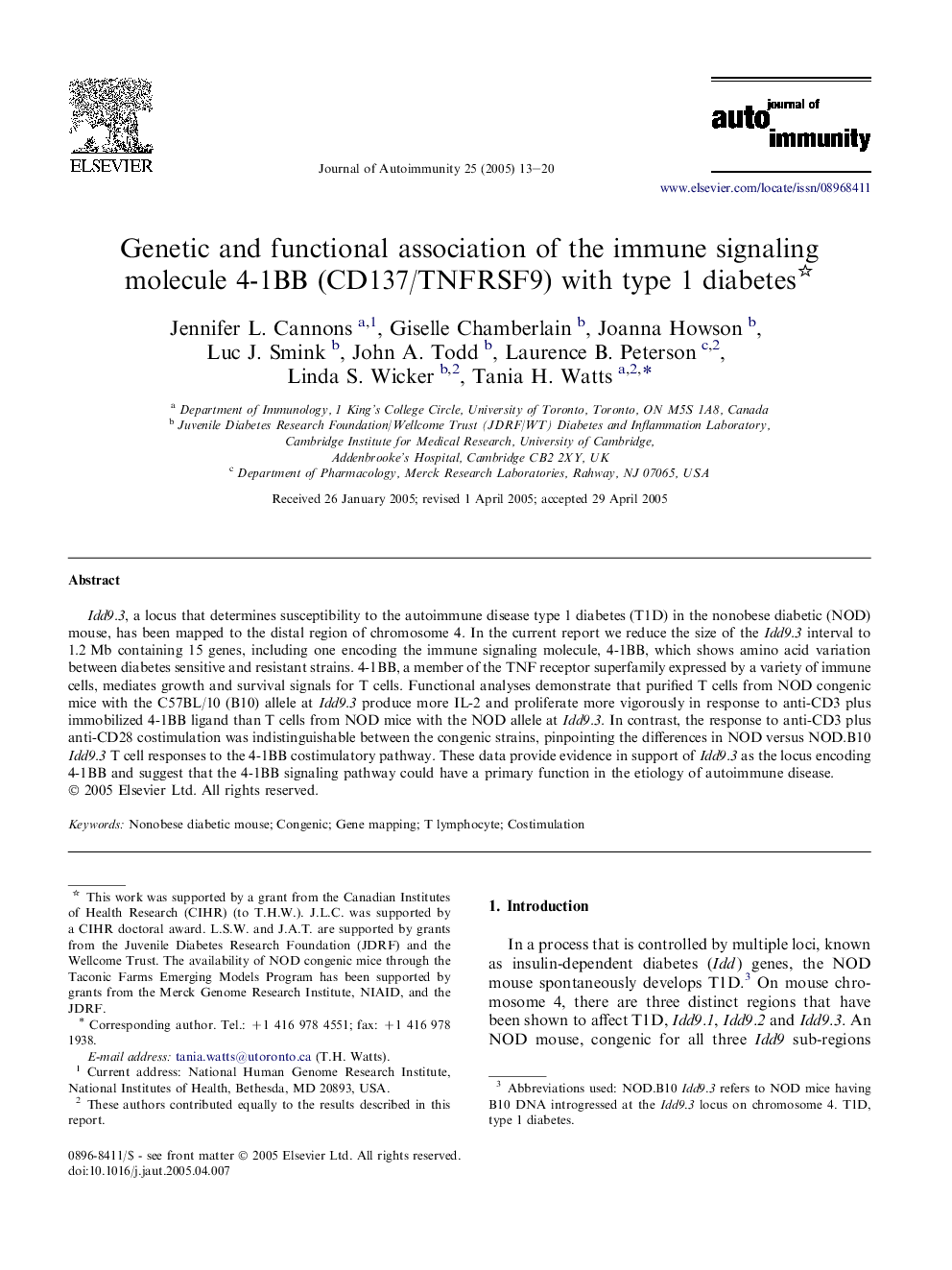| Article ID | Journal | Published Year | Pages | File Type |
|---|---|---|---|---|
| 9267798 | Journal of Autoimmunity | 2005 | 8 Pages |
Abstract
Idd9.3, a locus that determines susceptibility to the autoimmune disease type 1 diabetes (T1D) in the nonobese diabetic (NOD) mouse, has been mapped to the distal region of chromosome 4. In the current report we reduce the size of the Idd9.3 interval to 1.2Â Mb containing 15 genes, including one encoding the immune signaling molecule, 4-1BB, which shows amino acid variation between diabetes sensitive and resistant strains. 4-1BB, a member of the TNF receptor superfamily expressed by a variety of immune cells, mediates growth and survival signals for T cells. Functional analyses demonstrate that purified T cells from NOD congenic mice with the C57BL/10 (B10) allele at Idd9.3 produce more IL-2 and proliferate more vigorously in response to anti-CD3 plus immobilized 4-1BB ligand than T cells from NOD mice with the NOD allele at Idd9.3. In contrast, the response to anti-CD3 plus anti-CD28 costimulation was indistinguishable between the congenic strains, pinpointing the differences in NOD versus NOD.B10 Idd9.3 T cell responses to the 4-1BB costimulatory pathway. These data provide evidence in support of Idd9.3 as the locus encoding 4-1BB and suggest that the 4-1BB signaling pathway could have a primary function in the etiology of autoimmune disease.
Related Topics
Life Sciences
Immunology and Microbiology
Immunology
Authors
Jennifer L. Cannons, Giselle Chamberlain, Joanna Howson, Luc J. Smink, John A. Todd, Laurence B. Peterson, Linda S. Wicker, Tania H. Watts,
